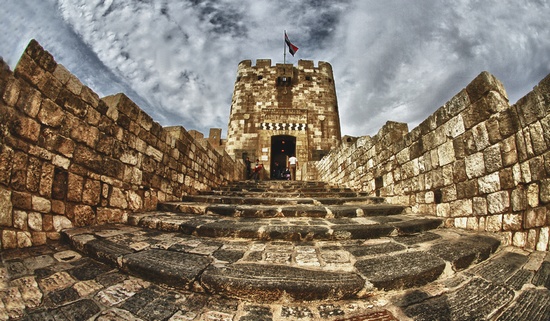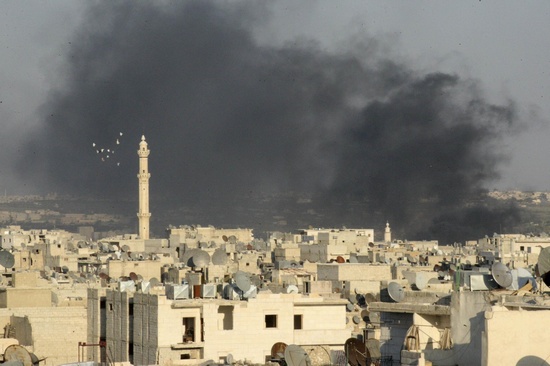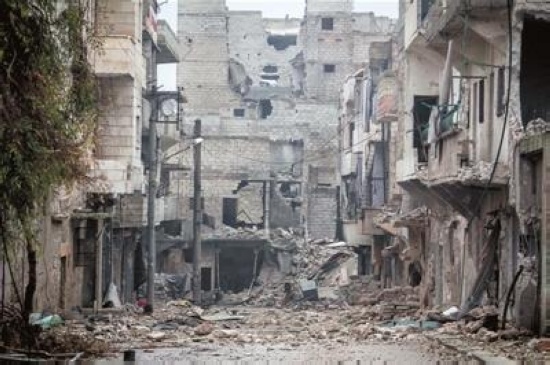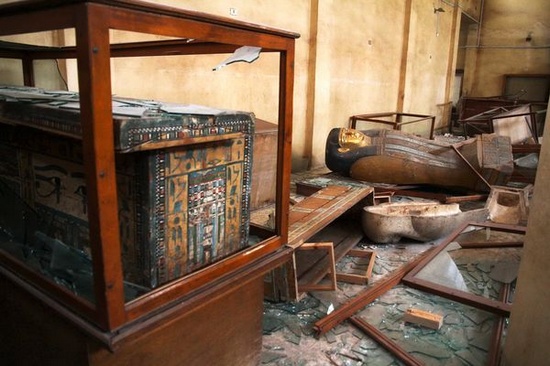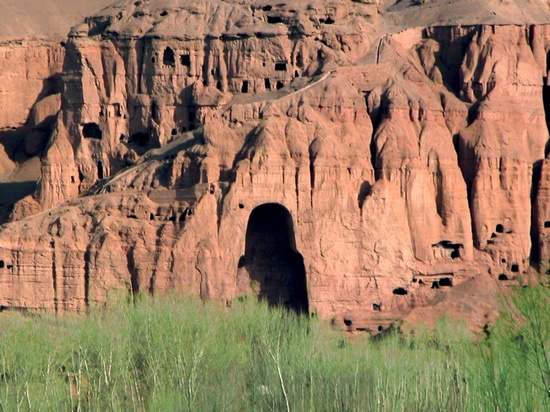Ironically, just one month before this tragic of the antique circle, the 37th World Heritage Conference sponsored by World Heritage Committee of UNESCO was held in Cambodia, where the topic concerning the protection of world heritage during wars and in the turmoil regions was put forward by 1300 delegates from every country and attracted the attention in the related circle in addition to the acceptation of new 19 world heritage sites. Mr. Sok An, Deputy Prime Minister of Cambodia and President of this Conference, called for the protection of world heritage with the concerted efforts from all the countries at the conference.
However, it seemed to be just a good wish. At present, in Syria, the civil war is still raging. Since March 2011, this country has been stranded in the severe turmoil. Six World Heritage Sites of Syria, viz. Ancient City of Damascus, Site of Palmyra, Ancient City of Bosra, Ancient City of Aleppo, Crac de Charviers and Qal’at Salah El-Din, Ancient Villages of Northern Syria, have been classified as the endangered world heritage sites. In Aleppo located at North Syria, the minaret of Umayyad Mosque built in 12th century collapsed because of the bombing. According to Reuters, Palmyra ruins, Ancient City of Damascus and Crac de Charviers, the important military fortress in the 12th century, were ransacked. According to the map of the State of Council, U.S., only 3% of Syrian World Heritage Sites are outside the conflict zone. Aleppo, which is considered to be the most characteristic of Arabian region, is just the center of war zone between conflicting parties and this ancient city suffered tremendously severe damages. Loubana Moushaweh, Minister of Culture of Syria, once introduced that because of the war, the damages, looting and stealing of antiquity were severe, and the antiquities smuggling along the border of Syria and Lebanon were very active.
The turmoil of war has changed everything.
On the list of 44 endangered sites of world heritage by UNESCO, more than half of them are enlisted because of the military conflicts and social instability. Just like Syria and Egypt, in those countries trapped in military conflicts, the protection of cultural heritage sites has received great concerns of international society. In March, 2012, the military conflict broke out in the wake of coup-d’état in Mali, which has caused the inconsiderable damages to World Heritage Sites. After the investigation into Ancient City of Tombouctou, the symbolic city of African Islam, UNESCO staff came to find that 14 mausoleums had been completely destroyed; parts of 3 famous mosques ruined while 4203 manuscripts disappeared. Tomb of Askia was just located in the conflicting zone, and 4 World Heritage Sites were on the list of endangered sites.
The military conflicts and wars are the most terrible natural enemies to World Heritage Sites, while the malicious destruction led many sites to the ruins forever. The most famous event happened in Afghanistan in 2001, in which African Taliban destroyed two Bamiyan Buddha statues of the 3rd century with bombs, which used to be the highest ancient Buddha statue in the world. In July, 2003, at the 27th World Heritage Conference, all the contracting countries made an unusual decision, viz. to put “Cultural Landscape and Archaeological Remains of the Bamiyan Valley” on the list of endangered world heritage site, although Afghanistan was not the contracting country and made no intention of applying for it. After the destruction of statues, the frescos were eroded consistently, stealing and robbing of antiquities happened frequently. Because of the impediments of bombs in the valley, it prevented the staff of antique protection from entering this region for quite a long time. Recently, the antique protection forces from Japan and Italy join this effort and the situation begins to take a new look slightly.
“It is rather foolish to destroy World Heritage Sites by violence. If the existent cultural heritage disappears, the dialogue between different cultures will be impossible.” Irina Bokova, Director-General of UNESCO said in anger.
Because of American invasion of Iraq in 2003, the war not only brings the turmoil of ten years to Iraqi people, but also causes countless disappearances of antiquities and heritages. In April, 2003, National Museum of Iraq, the 11th largest museum in the world, suffered the violent looting and destruction, while American army just sat idly by. More than 15,000 antique items disappeared. With the passage of ten years, only half of them have been retrieved. Since 2003, more than 32,000 antique items have been stolen from historical ruins across the country. According to the statistics published by the website of World Heritage Conference, among all the antique items buried in all the Iraqi territory, there are at least 12000 historical ruins waiting to be excavated while there are more than 100,000 unexcavated historical sites, most of which have been looted and destroyed before the investigation. Although Iraqi government has the related laws, the stealing and smuggling of antiquities are still prevalent in some remote archaeological ruins. For many years, there are no visitors in Hatra, the ancient city with century-long heritages, 110 miles away from Mosul in the north of Iraq. The simple reason is that Al-Qaeda attacks the cultural heritage consistently, especially those statues before Islamic civilization.
In 1954 after World War , UNESCO launched the Convention for the Protection of Cultural Property in the Event of Armed Conflict (Hague Convention) in Hague, the contracting countries promised to protect all the cultural properties actively during the war, no matter these properties were on the domestic or foreign territories. Liu Huawen, researcher of International Law Institute of Chinese Academy of Social Sciences, introduced that the conflicting parties must respect cultural properties no matter in the internationally armed conflict or not. On the one hand, except for the reason of military targets, the involved party should be extremely careful to avoid the damages to the architectures of religion, arts, science, education or charity and historical memorial places during the military operation; on the other hand, except for the necessity of military operation, the involved party should be forbidden to choose the cultural heritage, the property of great significance for any nation as the object of attack.
It is rather a pity that to destroy the old civilization has been incorporated into the social reform as one part of efforts and a method of publicizing the power. It is rather a pity that international convention has no necessary binding force, especially for those uncontracting countries such as Afghanistan. To actively advocate the protection of cultural property in the special state while reinforcing the strength of implementation of international laws has become the common concern for the international society and conference delegates. Just as Kishore Rao, Director of World Heritage Center of UNESCO, has found, “Angkor Wat used to be on the list of endangered sites because of the wrecking war. But thanks to the concerted efforts of restoration from more than 10 countries, its past glory is brought back again.” The war might be inevitable. When it really comes, to abide by the convention and cooperate with the international society, shall not be neglected in terms of protecting world heritage.
